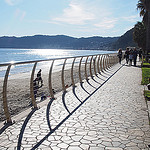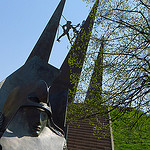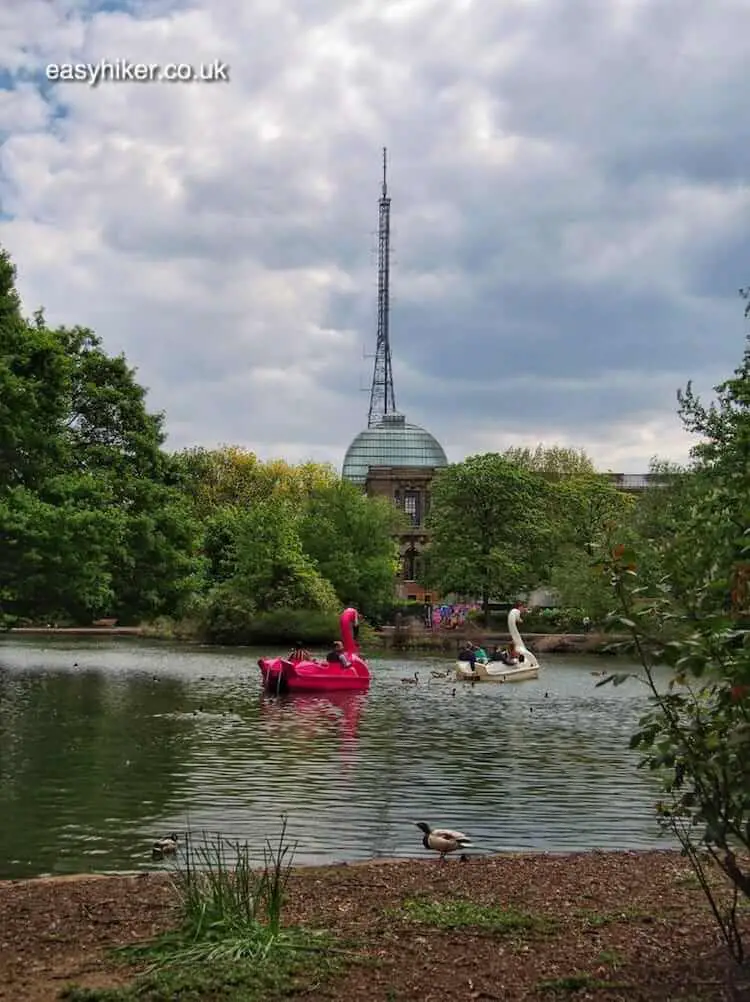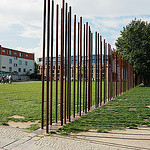For a man of his generation and relatively modest means, the Dutch painter Vincent van Gogh certainly got around a lot in Europe, spending time in Amsterdam and The Hague, Brussels, London and Paris.
It is the south of France, however, which had the deepest impact on the artist’s soul and on his works.
The Provence is van Gogh’s spiritual home, and the city of Arles provided the stage for the key episodes in the artist’s life and career.
Finding Vincent Van Gogh in Arles

Following in van Gogh’s footsteps around the city of Arles is as easy as it is inspiring and occasionally frustrating. Many of the buildings most closely associated with the artist have disappeared, a combination of WWII damage and neglect in the decades following the artist’s death.
(Also, it is fair to say that van Gogh, in his lifetime, was not the most popular man in Arles. In the letters to his brother Theo, he reports that adults laughed at him in the streets and children pelted him with stones. The Arlesiens called him “fou roux”, mad red-head, and petitioned the Mayor for his expulsion from the city.)
More surprisingly, perhaps, considering that little seems to have changed in Arles since the 19th century, it is as difficult to accurately locate some of van Gogh’s motifs. It sometimes feels as though the actual objects were concealing something familiar whose presence you can feel rather than see.
This can be an uncanny experience.

Finding Vincent Van Gogh in Arles, we start our tour on Place Lamartine, 100 metres south of Arles train station. The Yellow House (where van Gogh planned to establish an artists’ colony, although in the end only Gauguin followed his invitation) has disappeared, as has the restaurant next door (the Cafe de la Gare) and the public garden in front.
Of all the van-Gogh-connected buildings in the neighbourhood, only the Hotel Terminus is still standing. (The owners allowed van Gogh to use the hotel’s sanitary facilities as his Yellow House had no toilet.)
Still, the corner is instantly (and uncannily) recognizable if you have seen the painting, and this is not only due to the railway bridge in the back which still hovers over the scene.
One of van Gogh’s most famous Arles motives is only a short stroll away: the Starry Night on the Rhone, a companion piece (and predecessor) of the even more famous Starry Night of St Remy de Provence.

The exact place where the artist might have set up his easel is not easy to spot, not least because van Gogh often took the artistic freedom of mixing up and extending viewing angles (combining objects that cannot be seen from the same viewpoint).
But here, as in other places in town, the Arles municipal administration has helpfully marked the spot where the artist is most likely to have sat.

Just to the south of Place Lamartine and the ancient town gate, you will find the city’s former red light district. In a brothel on no. 1 rue du Bout d’Arles, van Gogh handed over his freshly severed ear to a prostitute, the most famous event not only in van Gogh’s life but arguably in all of art history (which tells you a lot about what we, the public, expect art history to deliver).
The street is now called the Rue des Écoles, but the building which would have occupied the lot at no. 1 is just an empty shell of three partly standing walls – it must have received a direct hit in a WWII air attack.
Further down, however, the street is well-preserved, and since all the remaining buildings in the street look more or less the same, you get a feeling of what the entire quarter must have looked like in the 1880s.

Carry on in a southern direction towards the Roman amphitheatre, turning right into Rue Diderot on the right side of the Arène and continuing until you reach the Place de Forum where van Gogh produced another famous work …

… standing in the north-eastern corner of the square to paint the Café Terrace at Night.

Make your way westward via Rue de la Liberté (and its extension) back to the Rhone to take a closer look at the only downtown river bridge, the Pont de Trinquetaille (bridges have stood in this place since Roman times).
Van Gogh painted the stairway up the bridge on your left hand side.

The mature tree that you see today may very well be the one that is little more than a sapling in the painting from 1888.

Vincent painted the bridge one more time, but this time from further away.

You can find the rough spot from where he did so by walking further downstream for approx. 200 metres.

Walk back into town and turn right into Rue Gambetta for the ancient city hospital, the Hotel Dieu, where Vincent van Gogh in Arles recovered from the nervous breakdown which had led to the ear-cutting incident.
Van Gogh lived in the hospital, on and off, for more than six months and often sat alone in the quiet hospital gardens. These would eventually provide him with the motive for one of his most blissfully beautiful paintings.

The garden is easily recognizable from the painting for one simple reason: it was painstakingly reconstructed to match every little detail from van Gogh’s vision of it.
It is true what Oscar Wilde said: Life imitates art far more often than art imitates life.

Turn right into the Boulevard des Lices for another garden that fascinated van Gogh, who, after all – despite his wanderings through Europe – had, until his arrival in Arles, not seen the rich and lush colours of the south.
Look for the main entrance to the Jardin d’Été right opposite the war memorial and then for the gate on your left hand side. This is where van Gogh chose to stand while painting the gardens.

We have now visited nearly all the sites within the city limits that were painted by van Gogh. There is a picture of a windmill on Rue Mireille, but nobody knows where exactly that windmill stood.
And there is the famous Langlois Bridge of which van Gogh produced four oil paintings and one water colour, but this bridge no longer exists, and the one you can visit today (in the outer suburbs of Arles) is a different bridge which was transported there from a different location.
Which only leaves us with the “Elysian fields” of Alyscamps for which we have to turn right into the Avenue des Alyscamps just behind the Jardin d’Eté.
This antique cemetery was already a famous tourist attraction in the late 19th century, an established station on the whistle-stop Grand Tour Of European Monuments undertaken by numerous fin de siècle artists and intellectuals.
The Austrian poet Rainer Maria Rilke wrote one of his best-known poems about the Alyscamps, engaging with the “open mouths” of the sarcophagi which, he felt, were addressing silent questions to us about life, death, and eternity.

It is interesting to compare that approach with van Gogh’s. Taking a closer look at van Gogh’s best known painting of this motive (he produced four in total), it looks like what interested him most about the Alyscamps was the opportunity of painting trees, passers-by and (what looks like) benches from an unfamiliar angle.
Van Gogh chose to stand a little above the alleyway on the Craponne embankment, something that you can no longer do because canal and cemetery have been separated by a row of dense vegetation.
None of the four paintings give you any idea that you are inside a cemetery, never mind a Roman monument. No questions of life, death and eternity here.

(This painting was the product of van Gogh’s and Gauguin’s first joint painting trip in Arles. An Asian collector paid USD 66 million for it at an auction in 2015.
Provence may have played a major part in van Gogh’s life, but only one of his works is on permanent display there: a painting of railway carriages that hangs in the Musee Angladon at Avignon.)
Van Gogh clearly had his own ideas about what made an interesting motif. What is the outstanding feature of the Arles cityscape? Most locals and visitors would probably agree that it is the old Roman amphitheatre. But van Gogh only painted the Arénes once, from the inside, without giving you a clue about its looks or its history.
Even by the bohemian standards of his fellow painters in the world of fine arts, he must have come across as more than a little strange. No wonder he and the citizens of Arles never quite hit it off.







